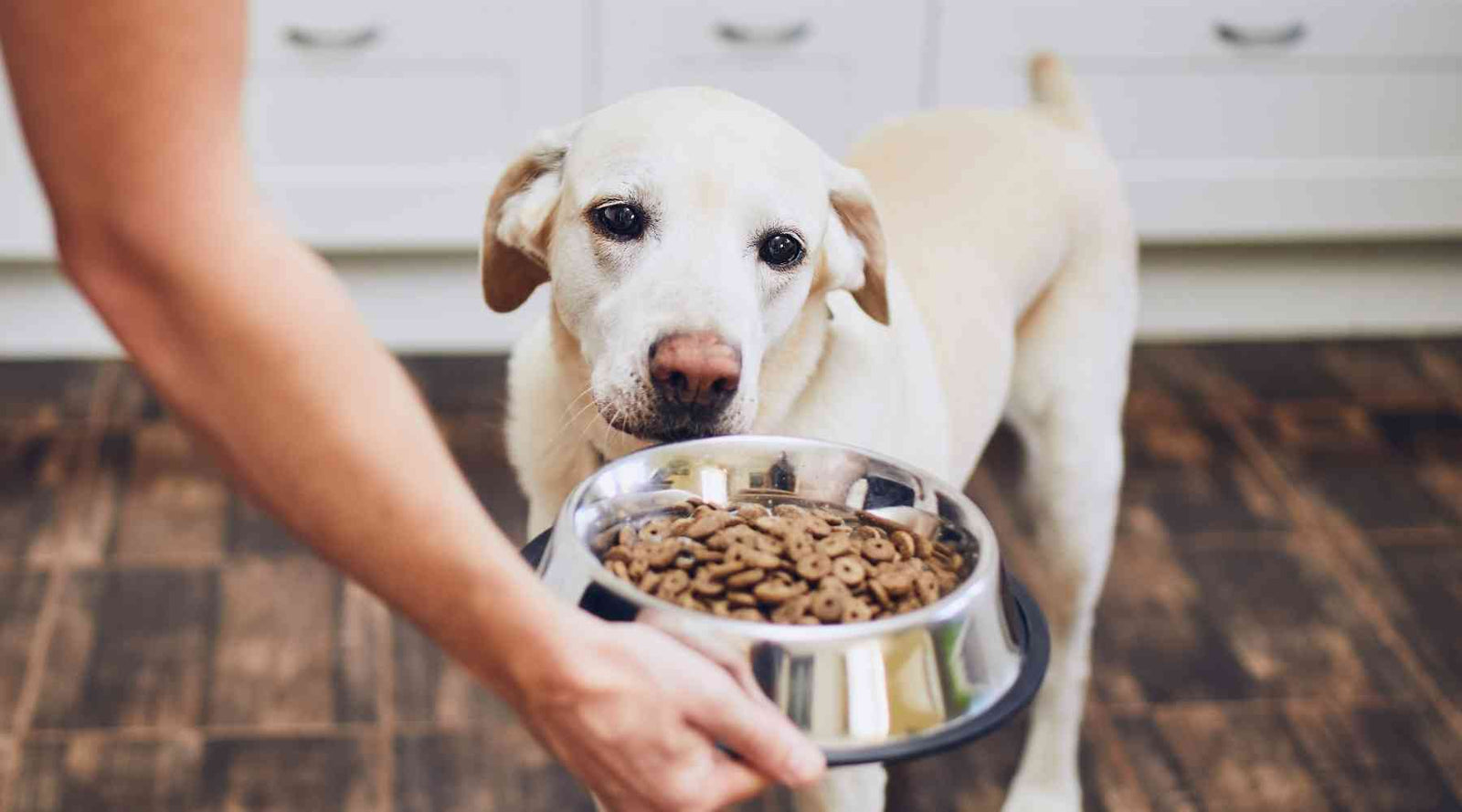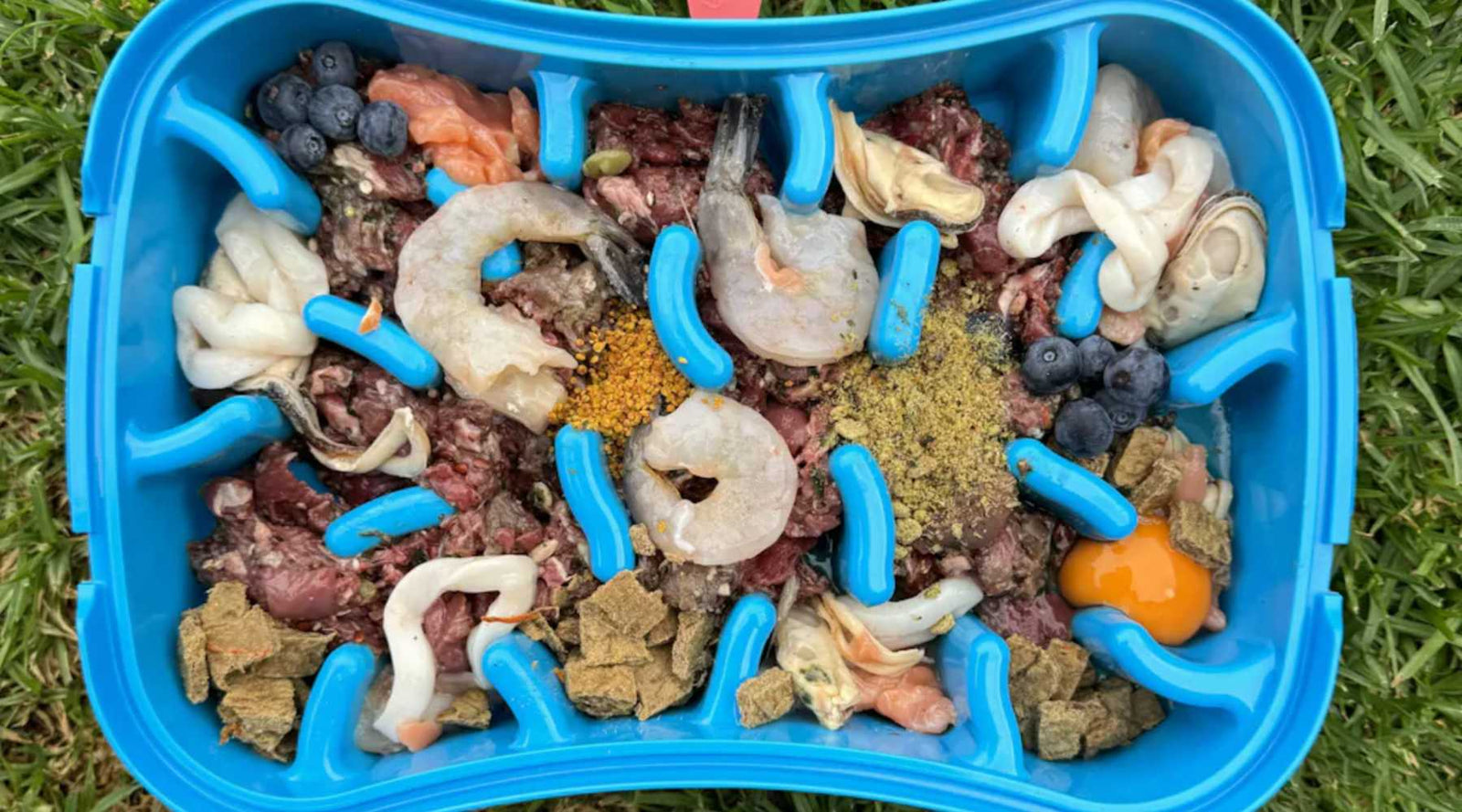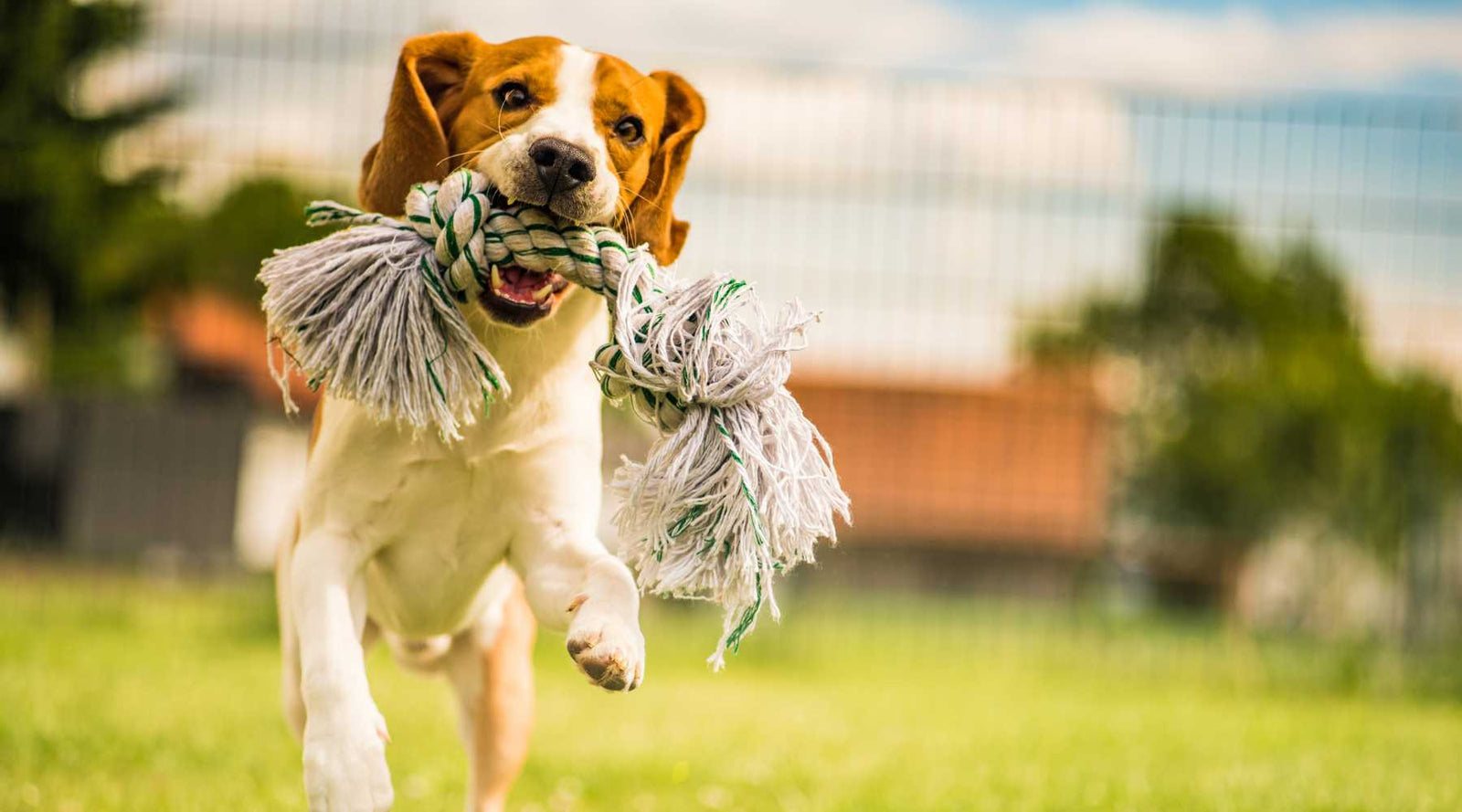Like any animal, dogs can get territorial and show resource guarding signs when it comes to feeding time. A dog who is resource guarding reacts when a valuable resource in its possession is threatened.
Whether your pup exhibits classic signs of resource guarding in dogs or not, knowing how to stop food aggression in dogs should be an integral part of your dog training routine.
Aggression toward food can cause dogs to act aggressively towards people, which may put them at risk of biting someone. It can also lead to your dog developing possessiveness issues.
There are several things you can do to help manage dog food aggression. You can also train your puppy so they don't become aggressive towards food.
What Is Food Aggression?
When dogs eat, they may experience food aggression. This aggressive behavior occurs when they feel threatened by another animal trying to steal their food.
Aggression towards foods is quite common in pets. A recent study found that nearly 20% of all pet owners report their dogs showing signs of aggression towards foods.
Aggression is a form of resource protection - a behaviour passed down through evolution, where animals need to defend anything they consider valuable. It's different from resource protection because it protects an item regardless of its value.
As a general rule, dogs only guard what they deem valuable. Because of this, they can guard a variety of resources - though food is perhaps the most common. In addition to food in their bowls, this could also be food that has been dropped on the floor during mealtimes, scraps that have been thrown away or even food that is being prepared on the counter that could be eaten.
This defensive behaviour can pose a problem in a food-aggressive food-guarding dog living in a household with children. It is essential to remember that children, especially younger ones, have a more challenging time recognizing the signals of guarding and may even ignore them entirely. This could cause a child to be growled at or bitten as a result of this.
Adults can also be at risk from this protective behaviour, so it's a good idea to beware of this protective behaviour, not just for children. To put it simply, it's about the dog's confidence in being able to eat at ease, and it's about how comfortable he is around others who share his house and his environment.
Causes
A variety of factors can cause food aggression in dogs. These are some of the most common reasons, however:
In a shelter environment, it can be learned through accidental training practices or by competing for limited resources.
When a dog experiences trauma, such as the loss of a caretaker, abuse or neglect, natural disasters, or a fight with another dog, its food aggression symptoms may appear. It is also possible for dogs to develop food aggression later in life. The more resources they have, the more protective they become, especially regarding food.
A pack-like mentality may make some breeds genetically predisposed to dominant or aggressive behaviour. Typically, hereditary guarding instincts are associated with dogs like English Springer Spaniels, German Shepherds and Rottweilers.
Several factors can cause food aggression in dogs, but shelter dogs may be more likely to experience this behaviour due to competition for beds, treats, potential mates, and food.
Signs of Aggression

There are several identifying signs of food aggression in severity, mild, moderate, and severe.
Verbal signs are the best way to detect mild food aggression. There is a possibility that your dog will growl when you approach their food or when they are eating. Look at their body language. A warning may also be expressed through the bareness of its teeth or the raising of its hackles.
When a person or another dog approaches a dog with moderate food aggression, the dog snaps or lunges.
Guarding possessions from humans and other animals is normal behavior for dogs. A dog with severe food aggression may bite or chase away perceived threats, causing injury to people or pets.
How to Stop Your Dog's Food Aggression
The good news is that you can manage or even prevent your dog's defensive behaviour if it displays any of these signs.
First and foremost, spaying or neutering your dog is a good idea. Spaying or neutering may reduce hormonal imbalances that cause aggression.
Training can also be used to treat food aggression in dogs. It involves a seven-stage sequence that focuses on desensitization and counterconditioning to make your dog comfortable eating near people. Here are seven steps you can take to help curb your dog's food aggression:
Stage One: Get your dog used to your presence when eating

It would help if you made your dog aware of your presence when eating meals or treats.
As your dog eats from his food bowl, stand back a few feet from them. To move on to the next stage of this training method, your dog must eat relaxed for ten consecutive meals.
Stage Two: Add a tasty treat, then step back

After placing the tasty treat, step back to your original distance immediately after adding the treat to their food bowl.
The key to success here is consistency. Every day, strive to move forward one step at a time. A dog is ready to move on to the next level if you can stand two feet away after placing a treat for ten meals in a row.
Stage Three: Stand close, and talk to your dog
 . Stand beside your dog and give him a special treat while he is eating from his bowl. Conversational questions such as "What are you having for dinner?" or "How is your food?" are suitable questions.
. Stand beside your dog and give him a special treat while he is eating from his bowl. Conversational questions such as "What are you having for dinner?" or "How is your food?" are suitable questions.
After giving your pup the treat, turn and walk away. The training can move on to the next stage if your dog eats ten or more meals consistently. Every time you repeat this process, you should wait a few seconds before starting again.
Stage Four: Try hand feeding at mealtime

This stage involves a lot of hand feeding. If you feed your dog, make sure they understand that you are not posing a threat to their food.
Hold a high-value treat to your dog while standing next to its bowl. Like the last stage, speak to your pup in a conversational tone. It would help if you encouraged your dog to take the treat out of your hand instead of placing it in their bowl.
When your dog takes the treat, bend down further each day until your hand is directly next to their bowl. As soon as they take the treat, turn and walk away to demonstrate that you aren't interested in their food. You can proceed to the next step after eating ten meals in a relaxed manner.
Stage Five: Touch their bowl, but do not take food from it

As with the last stage, stay near your dog after they take the treat from you this time.
Offering the treat with one hand, speak in a casual conversational tone. Don't take food items from their bowl - only touch them with your other hand. As a result, your dog will become more comfortable with your close presence during mealtimes. To progress to the next training phase, your dog must remain relaxed while eating for at least ten consecutive meals.
Stage Six: Lift their bowl off the ground to give them their treat

This stage requires you to lift their bowl from the ground and give them the delicious treat to build trust.
Talk calmly to your dog as you pick up its bowl. It would help if you lifted the bowl six to twelve inches from the ground, add the treat, and put it back down. Repeat this sequence, and return your dog's food bowl to its original location. You'll aim to lift the bowl higher and higher every day until you can place it on a table.
When you finish this step, your dog should feel comfortable eating around you because you will have established trust.
Stage Seven: Repeat this feeding process with the other family members

It is essential to feed your dog regularly if you want him to stay healthy and happy. He may need a different diet if you notice changes in his behaviour. A dog is an omnivore that consumes both plant and animal matter. Most food they consume can be digested, but some require specific nutrients to thrive. Some dogs may tolerate chicken better than beef, while others may prefer fish. Try giving your dog different foods and see how he reacts to them to find out what he likes.
Even if your dog eats well, he may remain aggressive. This is because he hasn't learned what foods make him feel good. He may be reacting to something else in the environment. Introduce him to a new person one day at a time, for example, if he gets nervous around people. Make sure not to feed him treats just because he seems hungry. Instead, try giving him a small amount of food and see how he reacts. Throughout the week, continue to offer him foods that make him feel comfortable.
Observing your dog behave differently after eating could indicate that he needs a different type of food. Start with baby steps if you want to change his diet. Once a week, switch up his meals. Then, gradually increase the number of meals per day. Within a few weeks, his behaviour should change.
If you're unsure whether you need help, don't be afraid to seek a qualified professional trainer or veterinarian/ animal behaviorist.
Changing the way dogs eat for good!
As responsible pet parents, we know that you want to do everything to help. Living with a sick dog after a meal is no fun. Our two doggos, Marley and Belle, both like to eat fast! So we know exactly what it's like to live with a dog in pain and discomfort after eating.
We are introducing the Ultimate, Versatile 4-in-1 Slow Feeder Dog Bowl! We're excited this new slow feeder dog bowl combines modern design with innovative functionality. It's more than just a slow feeder. A slow feeder bowl that naturally slows your dog down at chow time, as well as a reversible lick mat so your pet can enjoy a variety of delicious foods like purees, stews, or wet food. An excellent bowl for easy delicious food prep and storage doubles as a dog-friendly travel bowl for your canine adventures.
Your dog will have a happier, healthier mealtime experience giving you peace of mind.



